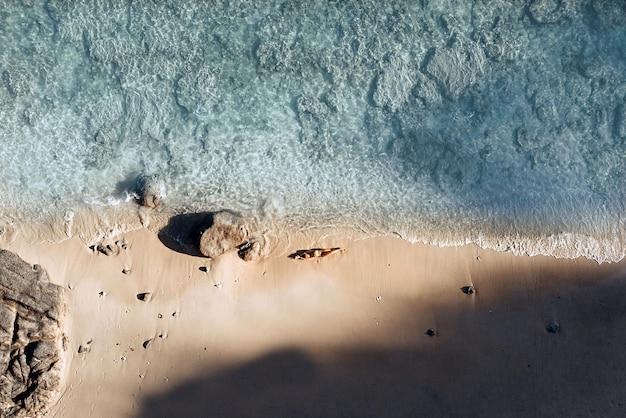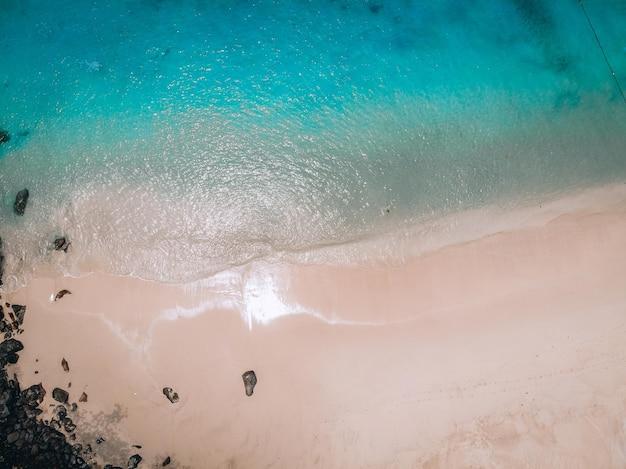Are you planning to give your car or wooden furniture a fresh coat of clear coat but unsure whether you should wet sand before applying it? You are not alone! The process of preparing your surface for clear coating can sometimes be confusing, and making the right decision is crucial for achieving a smooth, glossy finish. In this blog post, we will explore the question: “Should I wet sand before clear coat?” We will also answer common queries like how to prep for clear coat, when to wet sand, and other related questions.
Clear coating is a popular technique used to protect and enhance the appearance of various surfaces. And while wet sanding may seem like an additional step, it can actually significantly improve the outcome of your clear coat application. In this guide, we will delve into the benefits of wet sanding, the right time to implement this technique, and important factors to consider before proceeding. So, whether you’re a car enthusiast looking to restore a classic ride or a woodworking enthusiast wanting to achieve a flawless finish on your project, this blog post is here to help you make an informed decision. Let’s get started!
Should I Wet Sand Before Clear Coat
So, you’ve finished painting your car and now you’re faced with a crucial decision: should you wet sand before applying the clear coat? It’s a question that has perplexed car enthusiasts for ages. Well, buckle up because we’re about to dive into the world of wet sanding and clear coating to help you make an informed decision.
The Art of Wet Sanding
Before we get into the nitty-gritty, let’s first understand what wet sanding is all about. Wet sanding, my friend, is like giving your car’s paintjob a spa treatment. It involves using a fine sandpaper (usually in the range of 1000 to 3000 grit) along with some good ol’ H2O to smooth out the surface. Think of it as gently exfoliating your car’s skin to reveal a smoother, more radiant finish.
The Clear Coat Conundrum
Now, let’s move on to the star of the show: the clear coat. This magical layer is like a shield of armor for your car’s paint. It adds gloss, depth, and protection against the elements. But here’s the twist: applying clear coat directly over fresh paint can sometimes leave you with unwanted texture or imperfections. And that’s where wet sanding comes into the picture.
To Wet Sand or Not to Wet Sand
Ah, the million-dollar question! The decision to wet sand before clear coating ultimately depends on the condition of your paint job. If you’ve achieved a flawless, glass-like surface with your paint and you don’t see any orange peel or dust nibs, then you might just be able to skip the wet sanding step and proceed straight to clear coating. However, if you’re not quite satisfied with the finish or you notice any imperfections, wet sanding can be your savior.
The Benefits of Wet Sanding
Wet sanding is like a secret weapon that can take your paint job from good to jaw-droppingly great. By gently sanding the surface, you’ll not only remove any minor imperfections but also create a smooth canvas for the clear coat to adhere to. This means a more even and vibrant finish that will make heads turn everywhere you go. Plus, wet sanding can help eliminate any rough patches or unevenness in the paint, giving you that “just rolled out of the factory” look.
Wet Sanding 101: The Process
So, how does one actually wet sand before clear coating? Here’s a quick rundown of the process:
-
Start with clean and dry paint. Washing your car before wet sanding is essential to remove any dirt or debris that could scratch the surface.
-
Choose the right sandpaper. Opt for a fine-grit sandpaper, around 1000 to 2000 grit, to gently smooth out imperfections without causing damage.
-
Dip the sandpaper in water. Remember, it’s called wet sanding for a reason! Keeping the sandpaper wet helps prevent it from clogging up and reduces the risk of scratching the paint.
-
Gently sand in circular motions. Apply light pressure and work in small sections at a time. Remember, patience is key!
-
Rinse and repeat. Periodically rinse the sandpaper and the surface to remove any residue and evaluate your progress. If needed, switch to a higher grit sandpaper for a finer finish.
-
Dry thoroughly. After you’re done sanding, make sure to dry the surface completely before moving on to applying the clear coat.
The Verdict
So, is wet sanding before clear coating worth it? Well, if you’re a perfectionist or aiming for a flawless finish, wet sanding is definitely the way to go. It might require some extra time and effort, but the results will speak for themselves. On the other hand, if your paint job is already smooth as silk, you can probably skip the wet sanding and go straight for that clear coat.
Remember, my friend, wet sanding is an art form that takes practice and patience. If you’re not confident in your skills or you’re dealing with a high-value vehicle, it’s always a good idea to consult a professional. Now go forth and unleash the power of wet sanding, and may your car shine brighter than a disco ball at Studio 54.
FAQ: Should I Wet Sand Before Clear Coat
Can you polish clear coat without sanding
Polishing clear coat without sanding is possible, but it may not yield the best results. Sanding helps to remove imperfections, such as orange peel or surface scratches, before applying clear coat. By skipping the sanding step, you may not achieve a smooth and flawless finish.
How do you prep for clear coat
To prep for clear coat, start by thoroughly cleaning the surface to remove dirt, debris, and contaminants. Then, use fine-grit sandpaper to scuff the existing paint or clear coat gently. After sanding, wipe down the surface with a clean cloth or tack cloth to remove any dust particles.
How do you remove clear coat without damaging paint
Removing clear coat without damaging the underlying paint requires careful and gentle techniques. One method is to use a specific clear coat remover product following the manufacturer’s instructions. Another option is to use wet sanding techniques with very fine-grit sandpaper. However, it is crucial to be cautious and check your progress frequently to avoid damaging the paint.
Should I sand paint before clear coat on wood
Yes, sanding the paint before applying a clear coat on wood is recommended. Sanding helps to create a smooth and even surface, allowing the clear coat to adhere properly. It also helps to remove any imperfections in the paint layers, resulting in a better overall finish.
Do you wet sand between clear coats
Yes, wet sanding between clear coats is a common practice in automotive painting. Wet sanding smooths out any uneven areas, dust particles, or imperfections that may have formed during the previous clear coat application. It is essential to wet sand using fine-grit sandpaper and keep the surface wet to prevent scratches.
When can you wet sand clear coat
You can start wet sanding clear coat once it has fully cured. This typically takes around 24 to 48 hours, depending on the specific clear coat product and environmental conditions. It is essential not to rush the process; allowing the clear coat to cure ensures that it is stable and won’t be easily damaged during sanding.
How long should car paint dry before wet sanding
Car paint should dry for at least 24 hours before wet sanding. However, it is crucial to follow the specific recommendations provided by the paint manufacturer. Factors such as humidity and temperature can also affect drying times, so it’s essential to consider the climate conditions when determining the appropriate waiting period.
How long does spray coat take to dry clear coat
The drying time for a spray clear coat can vary depending on the product used and environmental conditions. In general, it will take about 24 to 48 hours for the clear coat to dry fully. However, it’s essential to read and follow the instructions provided by the manufacturer of the specific clear coat you are using.
How long should you wait in between coats of clear coat
Waiting between coats of clear coat is crucial to achieving a high-quality finish. Typically, it is recommended to wait around 5 to 10 minutes between each coat. However, refer to the instructions provided by the clear coat manufacturer for the specific recommended waiting time.
How many coats of clear coat should I apply
Applying two to three coats of clear coat is generally recommended to achieve adequate protection and a glossy appearance. By applying multiple coats, you ensure even coverage and a more durable finish. However, it is important to follow the specific recommendations provided by the clear coat manufacturer.
Why is my clear coat not glossy
Several factors can cause the clear coat not to appear glossy. It could be due to insufficient curing time, improper application technique, inadequate surface preparation, or using a low-quality clear coat product. Additionally, environmental factors such as temperature and humidity can also affect the final appearance of the clear coat. Ensuring proper curing, application, and following the manufacturer’s instructions can help achieve a glossy finish.
Do you rub down base coat before clear coat
Rubbing down the base coat before clear coat application is not necessary. The base coat forms the foundation for the color, and it should be smooth and even. However, it is essential to clean the base coat surface thoroughly and remove any dust or debris before proceeding with the clear coat application.
Does clear coat stick to 1000 grit
Clear coat can adhere to a 1000-grit sanded surface. When sanding with 1000-grit sandpaper, it creates a fine texture, which the clear coat can bond to effectively. However, it’s important to follow up with finer grits for optimal results and a smoother finish.
What grit sandpaper should I use between coats of paint
Between coats of paint, it is generally recommended to use a fine-grit sandpaper, such as 320-grit or higher. This helps to smooth out any imperfections or unevenness in the previous paint layer without removing too much material. Be careful not to sand too aggressively, as it may damage the paint.
Is 2 coats of clear coat enough
Applying two coats of clear coat is often sufficient for most projects. However, certain situations may require additional coats for extra protection or to achieve a particular finish. It’s best to refer to the clear coat manufacturer’s recommendations and follow their guidelines for the desired outcome.
How long does clear coat last
The durability of clear coat can vary depending on factors such as environmental conditions, maintenance, and quality of the product. On average, clear coat can last for several years, providing protection and maintaining a glossy appearance. Regular care and maintenance, such as washing and waxing, can help prolong its lifespan.
Can you sand clear coat and respray
Yes, it is possible to sand clear coat and respray if necessary. Sanding the clear coat can help remove imperfections or defects. After sanding, the surface can be primed and painted over with a new layer of clear coat to restore its appearance. However, it is essential to follow proper sanding techniques and ensure a clean, dust-free surface before respraying.
Will clear coat hide sanding scratches
Clear coat can help minimize the appearance of sanding scratches, especially if they are shallow. However, it may not completely hide deep or noticeable scratches. Proper sanding techniques and gradually using finer grit sandpaper, followed by a well-applied clear coat, can minimize the visibility of sanding scratches and create a smoother finish.

